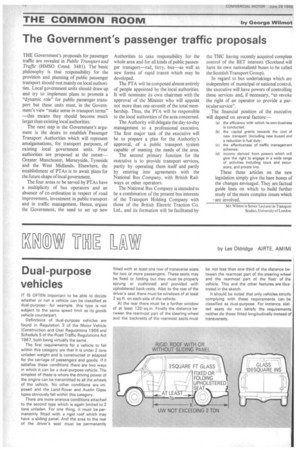Dual-purpose vehicles
Page 74

If you've noticed an error in this article please click here to report it so we can fix it.
IT IS OFTEN important to be able to decide whether or not a vehicle can be classified as dual-purpose--for example, this type is not subject to the same speed limit as its goods vehicle counterpart.
Definitions of dual-purpose vehicles are found in Regulation 3 of the Motor Vehicle (Construction and Use) Regulations 1966 and Schedule 5 of the Road Traffic Regulations Act 1967, both being virtually the same.
The first requirements for a vehicle to fall within this category are that it is under 2 tons unladen weight and is constructed or adapted for the carriage of passengers and goods. If it satisfies these conditions there are two ways in which it can be a dual-purpose vehicle. The simplest of these is where the driving power of the engine can be transmitted to all the wheels of the vehicle. No other conditions are imposed and the Land-Rover and Austin Gipsy types obviously fall within this category.
There are more onerous conditions attached to the second type which is again limited to 2 tons unladen. For one thing, it must be permanently fitted with a rigid roof which may have a sliding panel. And the area to the rear of the driver's seat must be permanently fitted with at least one row of transverse seats for two or more passengers. These seats may be fixed or folding but they must be properly sprung or cushioned and provided with upholstered back-rests. Also to the rear of the driver's seat there must be windows of at least 2 sq.ft. on each side of the vehicle.
At the rear there must be a further window of at least 120 sq.in. Finally the distance between the rearmost part of the steering wheel and the backrests of the rearmost seats must be not less than one-third of the distance between the rearmost part of the steering wheel and the rearmost part of the floor of the vehicle. This and the other features are illustrated in the sketch.
It should be noted that only vehicles strictly complying with these requirements can be classified as dual-purpose. For instance, slatted seats do not satisfy the requirements neither do those fitted longitudinally instead of transversely.
























































































































